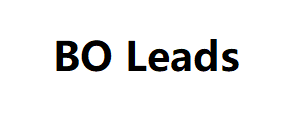Neglecting calibration for products with moving parts can have a series of detrimental consequences that affect performance, efficiency, safety, and the overall lifespan of the product. Calibration is especially critical for products involving moving components, such as machinery, vehicles, robotics, and mechanical systems. When moving parts are not calibrated regularly, issues such as inaccuracies, wear and tear, reduced functionality, and potential failures can emerge, leading to a range of negative outcomes. Inaccurate Performance: Calibration ensures that moving parts operate precisely and as intended. Neglecting calibration can lead to deviations from the expected performance. Components like motors, actuators, and gears might not move as accurately, resulting in misalignments, suboptimal control, and overall reduced efficiency. Accelerated Wear and Tear: Moving parts that are not calibrated can experience increased wear and tear. Friction, vibrations, and misalignments can cause premature deterioration of components, leading to breakdowns, disruptions, and the need for frequent repairs .
This results in decreased efficiency
Proper calibration optimizes the efficiency of moving parts by ensuring that they operate at their ideal settings. Without regular calibration, these parts may work harder than necessary, consuming more energy, generating excess heat, and experiencing additional stress. This results in decreased efficiency, higher energy consumption, and increased Ghost Mannequin Service operational costs. Unpredictable Behavior: Neglected calibration can lead to unpredictable behavior in moving parts. Inconsistent movements, irregular responses, and unexpected deviations can compromise the overall functionality of the product. This unpredictability can hinder operations, decrease productivity, and potentially lead to safety hazards. Safety Risks: Many products with moving parts are utilized in safety-critical applications. Neglecting calibration in these cases can lead to inaccurate movements, impaired control, and unexpected failures. These safety risks can lead to accidents, injuries, and damage to both users and the product itself. Decreased Product Lifespan: Regular calibration contributes to the longevity of moving parts by preventing excessive wear and stress.

This can impact the reputation
Neglecting calibration accelerates the deterioration process, shortening the overall lifespan of the product. This can result in higher maintenance costs and the need for premature replacements. Maintenance Challenges: Neglected calibration often leads to sudden breakdowns and malfunctions. These issues require unplanned maintenance, disrupting operations and increasing downtime. Reactive maintenance can be more time-consuming and expensive compared to regular, planned calibration. Compromised Product Quality: Moving Bo Leads parts that are not calibrated can lead to inconsistent product quality. For example, in manufacturing processes, misaligned or imprecise movements can result in defective products that do not meet quality standards. of the brand and lead to financial losses. Higher Operational Costs: Neglecting calibration can lead to higher operational costs due to increased energy consumption, frequent repairs, unplanned downtime, and the need for replacements. These costs can erode profitability and negatively impact a company’s bottom line. Customer Dissatisfaction: Products with unreliable .
